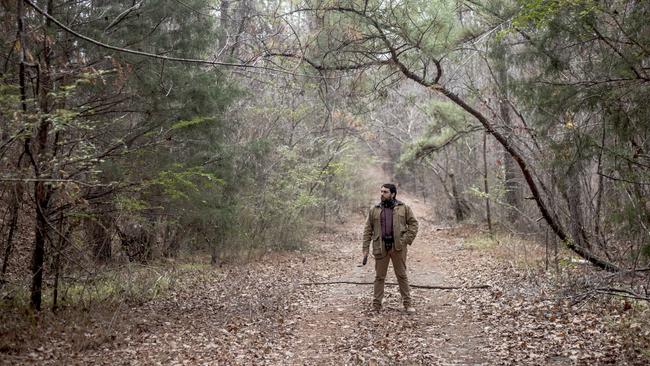S-Town: Serial spinoff leaves murder behind, looks at Trump’s America
Serial looked at a murder, but this podcast quickly pivots from that to its true focus.

It’s the latest release from the world’s most popular podcast team, and their most ambitious work to date. In 2014, stalwart US public radio program This American Life launched Serial, a highly experimental true-crime series. Across 12 episodes, it examined the murky conviction of a Baltimore student for murder and became a breakout phenomenon in the process.
A follow-up season launched the following year was met with markedly less enthusiasm. It shifted the show’s forensic attention abroad, investigating Bowe Bergdahl, an American soldier who walked away from his post in Afghanistan and into Taliban hands. Many listeners were frustrated by the season’s lack of focus and reliance on second-hand reporting, but Serial suffered no sophomore slump. With 50 million listens by its conclusion, that second season far outstripped the first outing’s success.
Serial is a unique beast. It’s the closest thing podcasting has to prestige television, with a depth of reporting and a degree of production polish that can’t be matched. This year, the series was spun out into a production company headed by co-founders Sarah Koenig and Julie Snyder, and podcasting godfather Ira Glass.
So there was huge excitement when Serial Productions announced S-Town, a seven-part journey to the tiny Alabama town of Woodstock, hosted by This American Life contributor Brian Reed. The series launched in late March, and while it has already broken download records, many listeners don’t quite know what to make of it. At first glance, it seems like a return to familiar ground: an unsolved murder, police corruption and old money in the dark corners of America’s south.
This enticing opening is quickly abandoned when S-Town slams on the narrative brakes two hours in and pivots towards its true focus: John B. McLemore, a hyper-intelligent eccentric loner who has spent his life in Woodstock.
The bait-and-switch is a clever way of hooking listeners, but it seems almost meanspirited to tease Serial fans with juicy true-crime material they’ve been crying out for. Instead of hard evidence, we have a series of stories told by unreliable narrators. The heavy lifting here is done by McLemore, a man who talks for hours with Reed on the phone, expounding apocalyptic theories on climate change before taking a break to piss in the kitchen sink.
He’s a fascinating subject, wildly entertaining, although Reed does struggle at times to keep their conversations on track. Using a personal tale as the emotive hook within a larger story is a common device in these long-form endeavours. S-Town, though, takes that structure and turns it on its head, coming out of the gate with ambition on a grand scale, then slowly whittling the story down until all that’s left is McLemore. It’s a risk, and one of many the show takes that serve as a reminder of the unique position Reed and the Serial team are in.
This is the first investigative podcast to publish its entire season simultaneously, eschewing the weekly drip feed most shows rely on to grow an audience. And the opening half-hour is a disorienting romp that flits from antique clocks to hedge mazes before finally explaining exactly what S-Town is about.
Reed can bury the lead 30 minutes into a story knowing listeners will hang in there. It’s a quiet, personal tale told in chapters, not episodes. Metaphor is abundant, with a particular focus on time and the way we measure it, from clocks to sundials. Perhaps S-Town’s creators could have put a little more thought towards the time of its listeners, though. How much does it achieve, in its almost seven hours, that couldn’t have been achieved in one or two?
That extreme length allows Reed to explore an array of topics, from sexuality in Donald Trump’s America, to loneliness, to the ugliness of estate battles. Some of these dalliances are fascinating, and they’re all beautifully told, but it’s often too easy to get distracted.
There is no great revelation lying at the heart of S-Town about life in the backwoods of Alabama, just a deep exploration of one man’s life. Many critics have already raised concerns over whether this journey into the id of a troubled man is ethically defensible. The podcast unearths a range of high personal details, including old lovers, questions of mental health, and an appetite for sadomasochism.
Whether he consented to this remains unclear for reasons that can’t be revealed without spoiling an early twist. But on a more fundamental level, is John B. McLemore worthy of this much attention?
Reed spent three years reporting the story, including one full-time, and was given significant editorial support to do so.
Journalists around the world are crying out for more resources to tackle significant issues. Could Serial’s dream team of radio talent and immense popularity not both be brought to bear on something weightier? That said, the story is deeply evocative. There’s an easy flow throughout the seven chapters, with each narrative beat falling precisely where it should.
Vitally, there’s a real sense of place that emerges steadily through the show. Colourful accents and stereotyped politics give way to a complex picture of a town populated by people living on the fringes of America. Daniel Hart’s score forms an essential part of the story without ever becoming a distraction.
Reed is the real star of S-Town. Most of the best sequences are formed by his narration, and the novelistic leanings of the show give him licence to really stretch his legs in a way that may seem incongruous in more straitlaced reporting.
This monologue, edited slightly for length, comes in the final chapter:
“As I was standing on the bank, I saw a bridge in the distance, I thought to myself, I wonder if that’s the bridge Tyler and John tagged their names under that day ... so I drove to the end of it and crawled underneath ... past a bunch of garbage, past a torn up couch and a pool lining and rotting deer carcass, and weirdly, the half-burnt medical records of an infant. And there they were. Tyler’s initials on one side, with an ‘established 1991’, John’s on the other, ‘established 1966’. There were no nasty words here, a couple of beer cans and cigarette boxes, but other than that, not too much trash. Together, Tyler and John found a place that was just a little bit cleaner.”
***
Complaints about unresolved questions have plagued Serial since its inception. The first season set out to establish if a man had been wrongly convicted of murder, then settled for a meditation on the concept of reasonable doubt. Season two asked if Bergdahl was a traitor or a hero, then ended up telling listeners about the state of affairs for soldiers in the Middle East. The risk is inherent in the format, where episodes are published weekly as the story unfolds.
S-Town is different. Reed completed his work on the podcast before it launched, but still structured the show as a largely chronological investigation.
This allows for some clever uses of foreshadowing, with Reed hinting at events to come.
But this was also a chance to avoid Serial’s frustrating habit of leaving listeners unsatisfied by framing S-Town with a question it could answer.
Amid an increasingly distressed media market podcast makers have shown an understandable if alarming lack of inventiveness. The medium is bloated with copycat shows and attempts to cash in on the success of a leading light, and there’s certainly no more imitated format than the first season of Serial.
The industry’s most well-resourced team is using its immense presence to shunt the medium in strange new directions. It’s a vital statement of intent, and a gentle reminder to some that podcasts can achieve far more than solve murders.




To join the conversation, please log in. Don't have an account? Register
Join the conversation, you are commenting as Logout